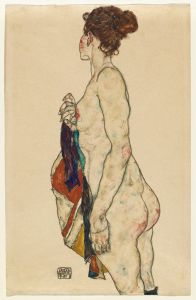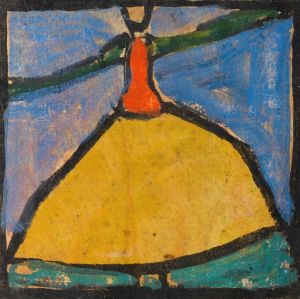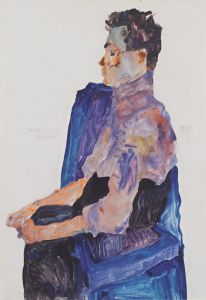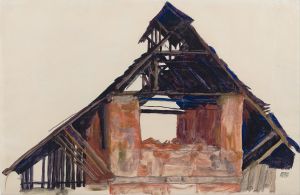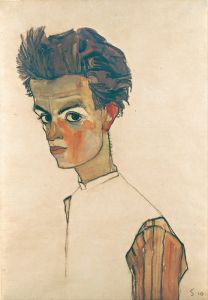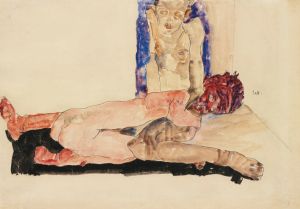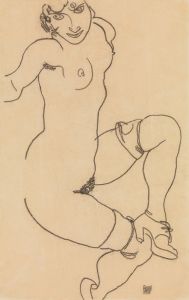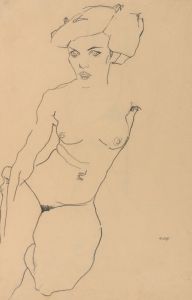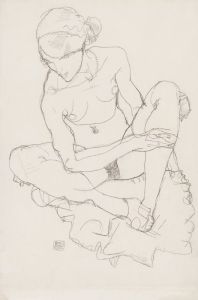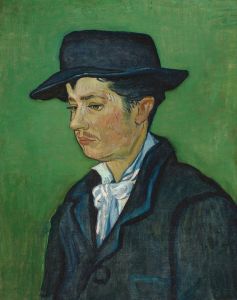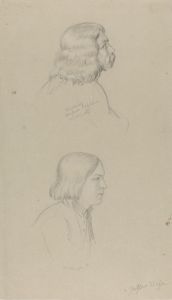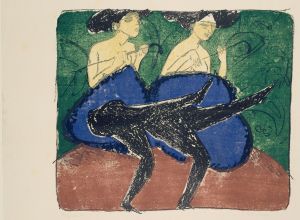
Knabenbildnis
A hand-painted replica of Egon Schiele’s masterpiece Knabenbildnis, meticulously crafted by professional artists to capture the true essence of the original. Each piece is created with museum-quality canvas and rare mineral pigments, carefully painted by experienced artists with delicate brushstrokes and rich, layered colors to perfectly recreate the texture of the original artwork. Unlike machine-printed reproductions, this hand-painted version brings the painting to life, infused with the artist’s emotions and skill in every stroke. Whether for personal collection or home decoration, it instantly elevates the artistic atmosphere of any space.
Egon Schiele, an Austrian painter known for his distinctive style and contribution to early 20th-century art, created the painting "Knabenbildnis" (Portrait of a Boy). Schiele, a protégé of Gustav Klimt, was a significant figure in the Expressionist movement, and his works are characterized by their raw emotional intensity and unique approach to the human form.
"Knabenbildnis" is one of Schiele's many portraits that reflect his interest in capturing the psychological depth and individuality of his subjects. Schiele's portraits often feature elongated figures, expressive lines, and a bold use of color, which are hallmarks of his artistic style. His approach to portraiture was innovative for its time, as he sought to convey more than just the physical likeness of his subjects, delving into their inner lives and emotions.
The painting "Knabenbildnis" exemplifies Schiele's ability to portray the complexities of youth. The subject, a young boy, is depicted with a sense of vulnerability and introspection. Schiele's use of line and color in this work highlights the boy's delicate features and the subtle emotions conveyed through his expression and posture. The background is typically sparse, drawing attention to the figure and enhancing the emotional impact of the portrait.
Schiele's work often explored themes of identity, sexuality, and existential angst, reflecting the broader cultural and social changes occurring in Europe during the early 20th century. His portraits, including "Knabenbildnis," are noted for their psychological depth and the way they challenge traditional notions of beauty and representation.
Throughout his career, Schiele faced both acclaim and controversy. His candid depictions of the human body and exploration of taboo subjects led to accusations of obscenity, and he was even briefly imprisoned in 1912. Despite these challenges, Schiele continued to develop his unique artistic voice, leaving a lasting impact on the art world.
"Knabenbildnis" is part of Schiele's broader body of work that continues to be studied and admired for its emotional intensity and innovative approach to portraiture. His influence can be seen in the works of later artists who sought to push the boundaries of traditional art forms and explore the complexities of human emotion and identity.
Egon Schiele's life was tragically cut short by the Spanish flu pandemic in 1918, but his legacy endures through his art, which remains a subject of fascination and study. "Knabenbildnis," like many of Schiele's works, offers a glimpse into the artist's unique vision and his ability to capture the essence of his subjects with profound sensitivity and insight.





